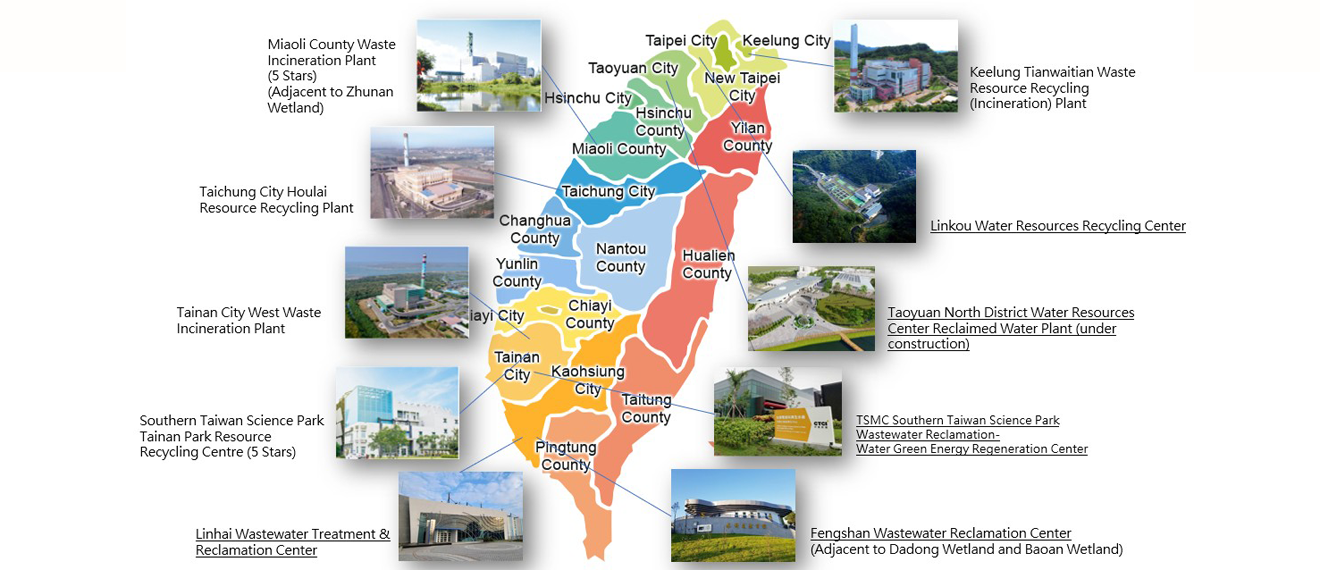Eco-friendly Innovation
綠色創新
CTCI Preserves Biodiversity with Expertise in Green Engineering
Following the Paris Agreement's promise to keep global temperature rise below 1.5˚C, the 15th United Nations Biodiversity Conference (COP15) was held at the end of 2022 with the goal of leaving a brighter future for generations to come. The Kunming-Montreal Global Biodiversity Framework was endorsed by nearly 200 nations worldwide, with a consensus of "30 X 30," aiming to protect 30% of the world's terrestrial and 30% of its aquatic species diversity by 2030. It seeks to stop the ongoing extinction of terrestrial and marine life, raise public awareness, and ensure that by 2030, ecosystem loss in areas of high biodiversity importance is almost nonexistent.
According to the 2023 World Economic Forum, six risks are associated with the climate environment, with "failure to mitigate climate change" ranking first and "biodiversity loss and ecosystem collapse" ranking fourth among the top ten risks for the next ten years based on impact severity assessment. This indicates that the Earth's biological environment will be in jeopardy if adjustments are not implemented soon.
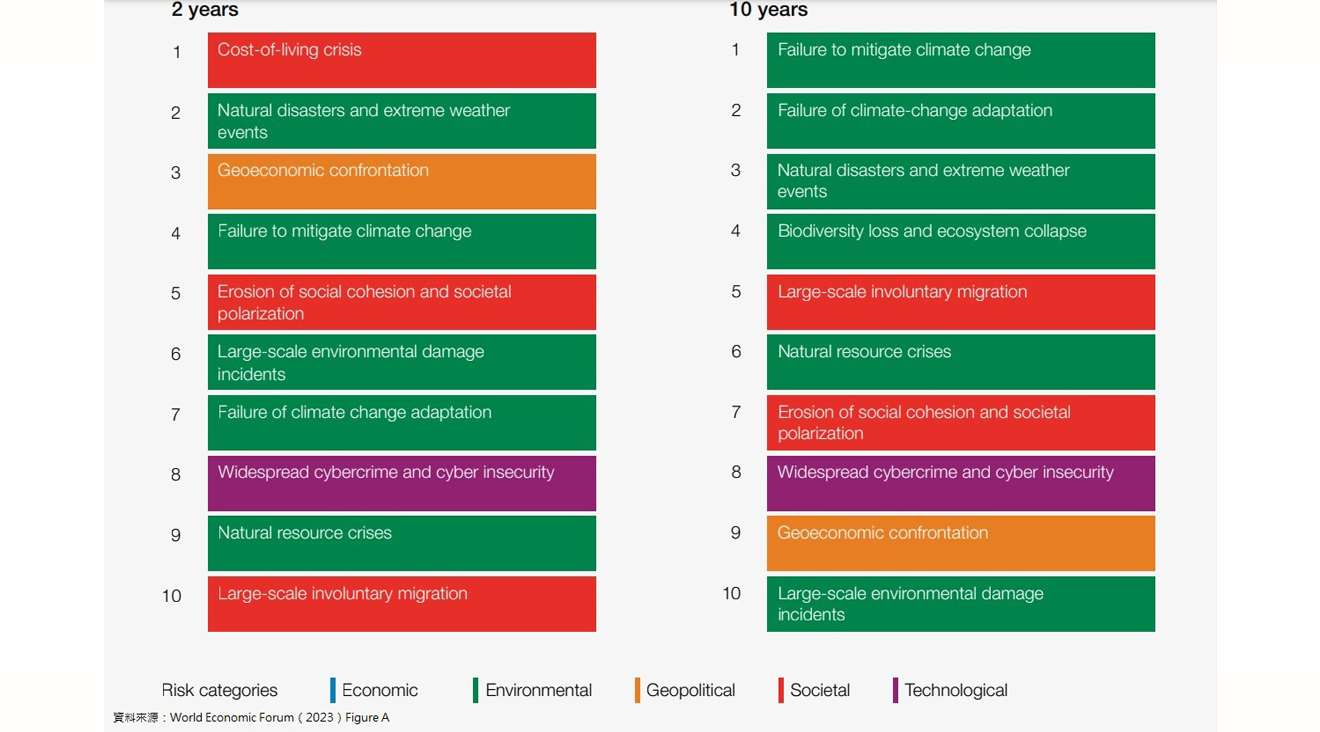
What Is Biodiversity?
Three levels make up biodiversity: genetic diversity, species diversity, and ecosystem diversity. The more genes that can support environmental natural selection there are in the population, and the stronger the ability to adapt to the environment, the more likely the population is to survive and evolve. On the other hand, the higher the species diversity, the more species there are in a given area. In general, species diversity increases with proximity to the equator; higher ecosystem diversity corresponds with increased environmental complexity; this is because more diverse habitats will provide a greater variety of niches that support a greater number of species. For instance, the ecological diversity of tropical rainforests surpasses that of grasslands and deserts. Every living creature is unique and has a certain purpose in the environment. As a result, biodiversity is a natural resource storehouse and is crucial to the sustainable management of the planet's resources.
CTCI’s Biodiversity Commitments and Goals
As a “Guardian of Sustainable Earth,” CTCI is dedicated to the long-term development of green engineering technologies. From the standpoint of the entire life cycle of projects, including design, procurement, construction, commissioning, operation, and decommissioning, it offers economical and feasible solutions to clients. Solutions that focus on energy conservation and environmental protection, lessen the chance of harming human health and the environment, and benefit CTCI, its partners, stakeholders, and the community at large. CTCI makes every effort to preserve a healthy ecological environment.
With respect to safeguarding natural ecology and biodiversity, CTCI is committed to the following:
1.Provide products or services that comply with Zero Deforestation standards and avoiding biodiversity hotspots in our operational sites.
2.For existing operational sites that encompass biodiversity hotspots, we are committed to implementing strategies of avoidance, mitigation, restoration, and compensation to reduce the impact on those areas.
3.Regularly monitor the ecological environment surrounding operational sites and assess their impact.
4.Implement biodiversity risk identification, including our own operation sites, adjacent areas to our own operations, upstream, and downstream activities.
5.Support biodiversity conservation activities or initiatives.
6.Engage with upstream and downstream value chains and stakeholders to achieve the aforementioned commitments.
CTCI has established a 2030 target to achieve No Net Loss (NNL) to biodiversity at operating sites and meet the zero deforestation standard; and a 2050 target operating site to achieve a Net Positive Impact (NPI) and a value chain achieve No Net Loss and comply with zero deforestation standard. The implementation of ecological protection of the project location is necessary for CTCI to accomplish the aforementioned goals when carrying out various engineering projects. This includes working with ecological professionals to implement ecological inspections at every stage of public construction projects, including design and construction to gather, look into, and evaluate a variety of ecological data. Meanwhile, these ecological professionals will help incorporate the idea of ecological conservation into projects by suggesting and putting into practice ecological conservation measures. Prior to construction of international construction sites, we also take care of the ecological environment of the surrounding area, make the required evaluation of the impacts on the environment. When planning the projects, we take into account the local wildlife, ecosystems, and habitats; stay away from significant protected areas and unique habitats; and provide options for mitigation, restoration, and compensation.
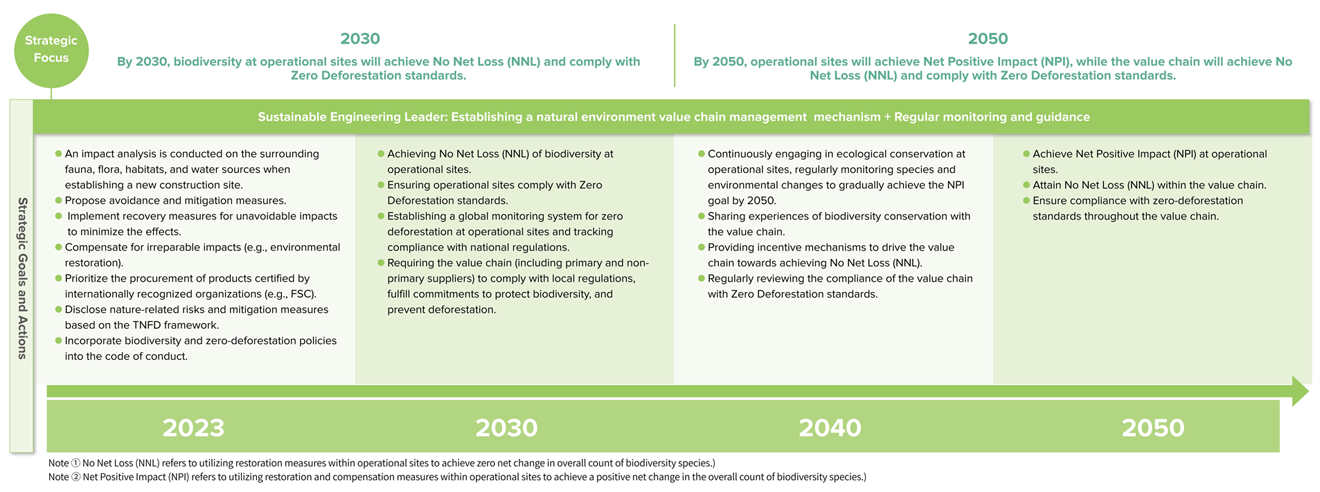
Embracing the Vitality of Water to Preserve Biodiversity
Currently, over 80% of wastewater worldwide is released into freshwater and ocean environments without treatment, endangering the rich biodiversity of these environments and further degrading the hydrological system. Thus, one of the key aspects of environmental protection will be the construction of wastewater treatment facilities. For over 40 years, CTCI has been actively involved in the water resources sector. With years of experience and track records, it continues contributing to the preservation of the hydrological environment. By implementing the "CTCI Biodiversity Project - Embracing the Vitality of Water," CTC helps Group members better understand the importance of protecting the hydrology. We prioritize ecological protection at every stage of the engineering, procurement, and construction processes, and utilize specific ESG actions to gradually achieve the Group's biodiversity target at the headquarters building, operating bases, and project executions. The end goal is to shift the planet's equilibrium from being nature-negative to nature-positive.
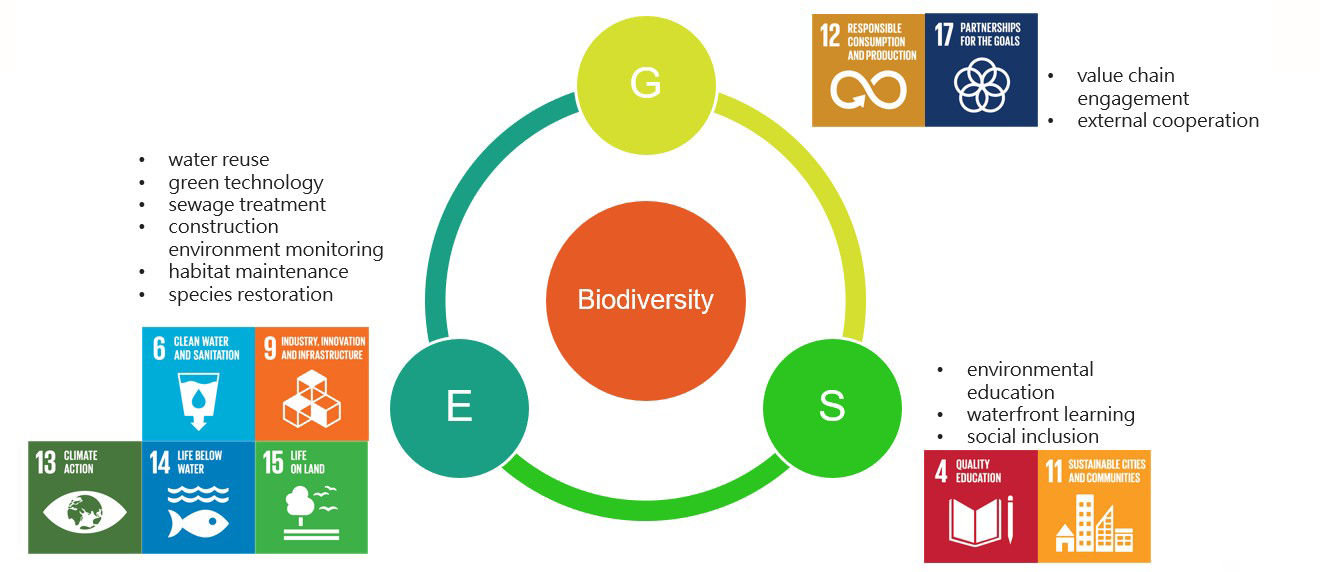
1.Engineering stage
The Public Construction Commission calls for ecological inspection operations for new projects, and environmental impact assessment operations are required for projects planning. During project design, based on the ecological assessment results of the feasibility study, we propose ecological conservation countermeasures and engineering plans to complete detailed design.
2.Procurement stage
Preserving biodiversity is one of the requirements for the climate action in the CTCI Sustainable Supply Chain Development Strategy. Vendors must pledge to evaluate and disclose their dependence and impact on biodiversity through "Vendor's Commitments to Corporate Sustainable Management and Net Zero,", and willing to comply with zero deforestation.
3.Construction stage
Not only must trees not be cut down from the construction site, but mitigation of the noise, vibration, and dust generated by the construction activities must also be taken into account in order to lessen the negative effects on the environment. Additionally, we also minimize lighting, and night-time constructing to reduce disturbance to neighboring habitats. Before entering a construction site, personnel must complete an environmental education training; or alternatively, meetings can be used to inform personnel about laws/regulations pertaining to ecological preservation and the measure that should be taken for ecological conservation.
To further demonstrate its commitment to preserving ecological diversity, CTCI also participated in external initiatives and signed the Action Statement of the Business for Nature. This statement has garnered responses from more than 400 businesses across 53 nations. In order to reverse nature loss by 2030, the Action Statement of the Business for Nature hopes that all major businesses and financial institutions will evaluate and reveal their risks, impacts, and dependence on biodiversity by that year.
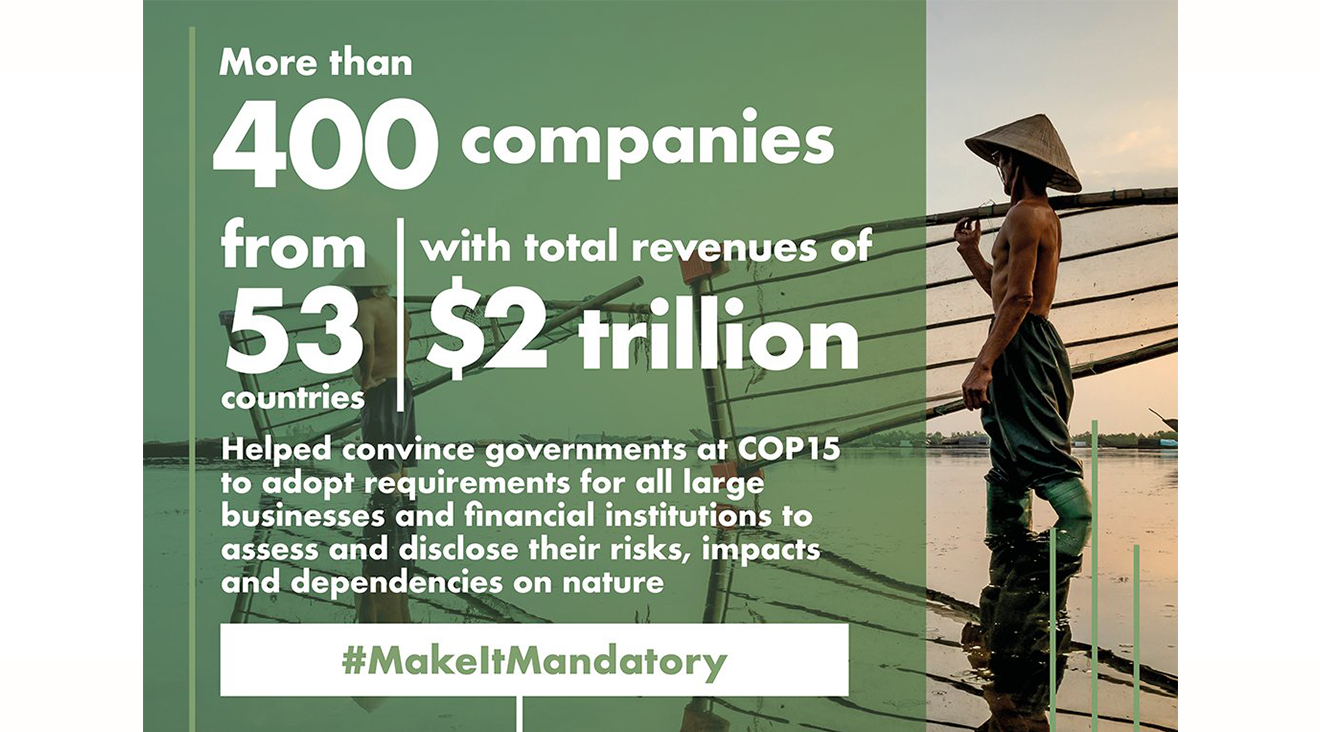
Collaborating with Business Partners and Increase Influence Through Education
Not only should CTCI pay attention to and support the issue of biodiversity, but its stakeholders—including governments, scholars, experts, local communities, vendors, and customers—must also be involved. In addition to using our own expertise in environmental education to spread the ideas among the general public and help preserve biodiversity, we also collaborate with business partners to increase our influence.
For instance, in 2022, CTCI organized club tours to Taipei City's Guandu Wetland, a significant natural resource and national landmark. After gaining an understanding of the wetland, we took guided park tours to discover the wetland features, learning how to preserve wetlands by removing tall grasses from paddy fields, dredging water sources to maintain the wetland's water purification functions , and safeguarding Guandu Wetland's biodiversity.
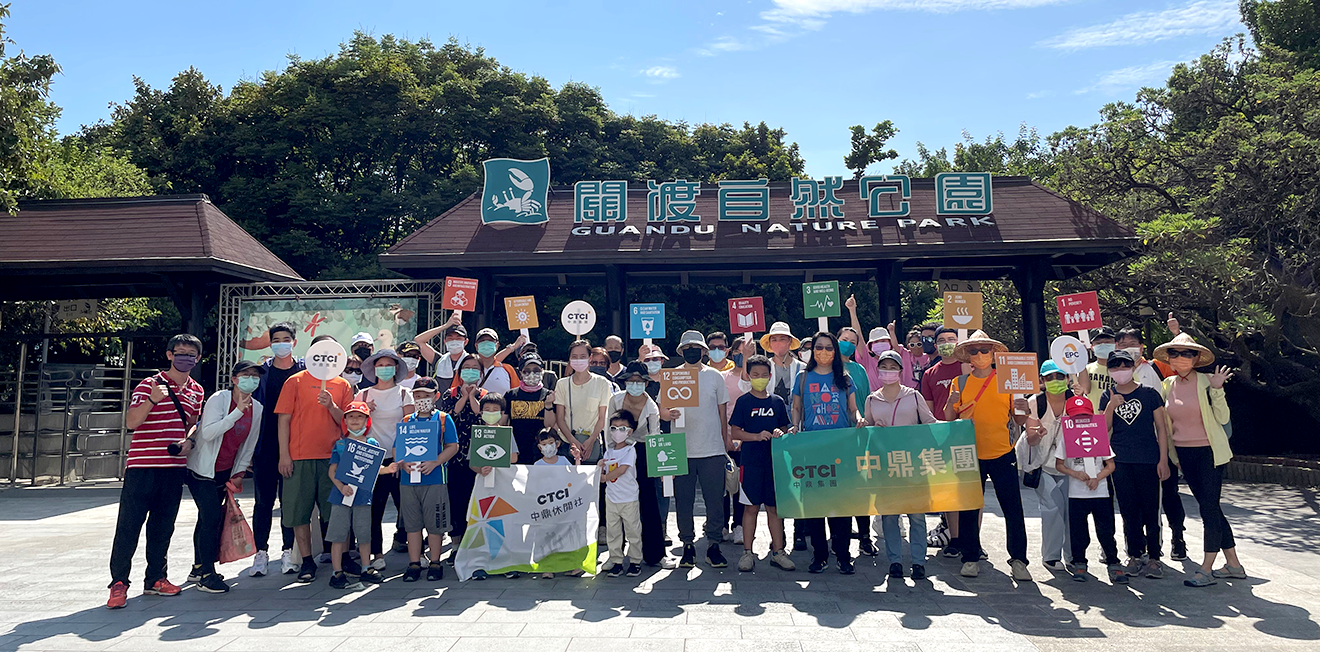
In 2023, we organized an initiative named the Urban Explorer Biodiversity Collaboration Plan that cooperated with Zhishan Cultural and Ecological Garden, and nine local major cultural exhibition halls to practice ecological conservation. Colleagues volunteered to team up with the public to take part in bird, plant, and insect surveys, create survey databases, and carry out conservation strategies to preserve biodiversity of Taipei City. In addition to expanding their ecological perspectives, colleagues and the public can learn more about their living and working environments, gain knowledge about species through surveys, and be entertained and educated while spending time in nature.
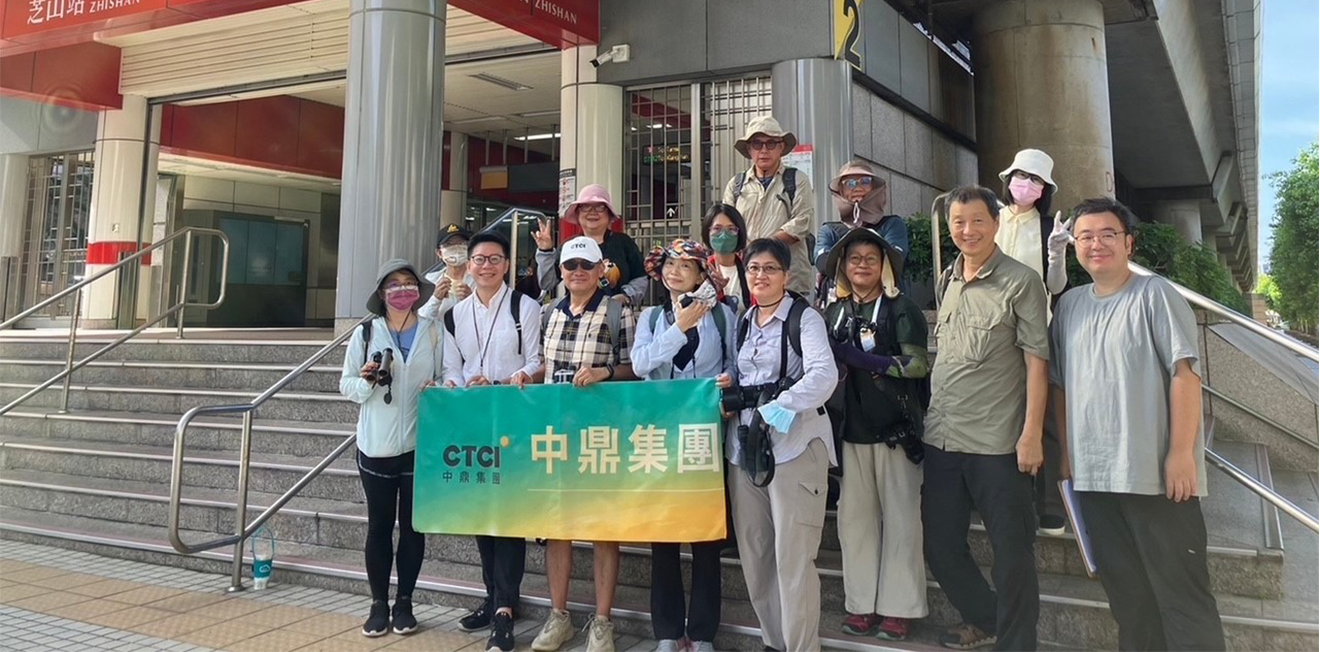
Furthermore, CTCI has spared no expense when it comes to its long-standing investments in ecology and environmental education. For instance, the Miaoli Energy-from-Waste Plant has developed ecological environmental educationthat combines the native mangroves, purple butterflies (Euploea), and migrating birds of the neighboring Zhonggang Creek. In order to encourage the public to reflect on the importance of environmental ecology, the Keelung Energy-from-Waste Plant uses "The Black Kite Returns to Its Nest" as its environmental education theme, starting from the endangered Black Kite issue in Keelung. Similarly, the Linkou Water Resource Recycling Center uses the existing Formosan Ash to create a rhinoceros beetle restoration area in which elementary school students can take part, demonstrating how environmental education spreads downward.
Conclusion
As "A Guardian of Sustainable Earth," CTCI is dedicated to using its core competency of "green engineering" to develop engineering projects that consider the environment and the global economy, thereby significantly reducing greenhouse gas emissions and advancing the goal of net-zero emissions. Additionally, it encourages biodiversity preservation in order to carry out ecological conservation and support the Earth's sustainability.






